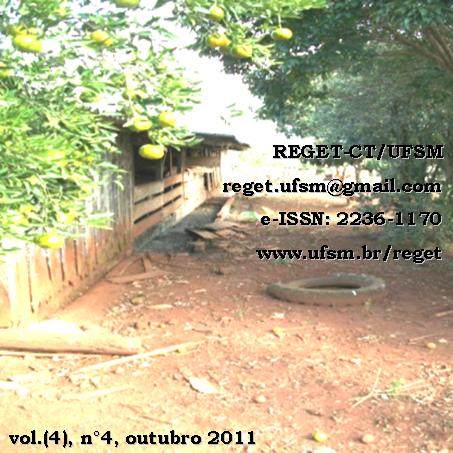BENEFÍCIOS POTENCIAIS DE PLANTAS DANINHAS: UMA PERSPECTIVA DE EDUCAÇÃO AMBIENTAL
DOI:
https://doi.org/10.5902/223611703901Keywords:
weeds, potential, sustainable management.Abstract
The present paper aimed to carry out a different analysis of weeds found in the municipalterritory of Paraíso do Sul, researching and presenting its potential agronomical, medicinalor economic benefits. To do so, samples were collected from maize fields located in 10 areasin the countryside of the city. The species were identified, contributing to the review of theliterature. The following selected species were the most abundant ones: Amaranthus deflexusL., Bidens pilosa L., Commelina erecta L., Cynodon dactylon (L.) Pers., Cyperus hermaphroditus(Jacq.) Standl., Digitaria ciliaris (Retz.) Koeler, Digitaria nuda Schumach., Echinochloa colonum(L.) Link, Euphorbia heterophylla L., Galinsoga parviflora Cav., Polygonum punctatum Elliott,Portulaca oleracea L., Richardia brasiliensis B.A. Gomes, Scoparia dulcis L., Sida rhombifoliaL., Stemodia verticillata (Mill.) Hassl. e Urochloa plantaginea (Link) R.D. Webster. Based on thedata presented, we seek to encourage the public to change the common opinion about thesespecies. This study will serve to further environmental education.
Downloads
References
CENTRO ECOLÓGICO IPÊ. Agricultura Ecológica. Alguns princípios básicos. Centro Ecológico Ipê, 2002. 52p.
CHRISTOFFOLETI, P. J. Benefícios potenciais de plantas daninhas: I Nutricêuticos e Fitodescontaminantes ambientais. Revista Planta Daninha. v. 19, nº. 1, Viçosa, 2001. p. 151-153.
FLECK, N. G. “Minha Opinião: Herbologia”. Revista Ciência das Plantas Daninhas. v. 14, nº. 2, 2007. p. 9-10.
GARLET, T.M.B.; IRGANG, B.E.; 2001. Plantas medicinais utilizadas na medicina popular por mulheres trabalhadoras rurais de Cruz Alta, Rio Grande do Sul, Brasil. Revista Brasileira de Plantas Medicinais. v. 4, nº. 1, Botucatu, 2001. p. 9-18.
HILLOCKS, R.J. The potential benefits of weeds with reference to small holder agriculture in Africa. In: Integrated Pest Management Reviews. v. 3, p. 155-167, 1998.
INSTITUTO BRASILEIRO DE GEOGRAFIA E ESTATÍSTICA. Estimativa da população. Disponível em:
Acesso em: 14 mai. 2010.
KISSMANN, K.G. Plantas infestantes e nocivas – Tomo I. 2. ed. São Paulo: BASF, 1997
LORENZI, H.; MATOS, F.J.A. Plantas medicinais no Brasil: nativas e exóticas. 2. ed. Nova Odessa: Instituto Plantarum, 2008.
PINTO, D. et al. Metabólitos secundários isolados de Richardia brasiliensis Gomes (Rubiaceae). In: Revista Brasileira de Farmacognosia. v.18, n. 3, 2008. p. 367-372.
SOUZA, V.C.; LORENZI, H. Botânica Sistemática. Guia ilustrado para a identificação das famílias de Angiospermas da flora brasileira, baseado em APG II. 2.ed. Instituto Plantarum de Estudos da Flora Ltda. Nova Odessa, 2008.
VENDRUSCOLO, G. S.; MENTZ, L.A.. Levantamento etnobotânico das plantas utilizadas como medicinais por moradores do bairro Ponta Grossa, Porto Alegre, Rio Grande do Sul, Brasil. v. 61, n. 1-2. IHERINGIA, Sér. Bot., Porto Alegre, jan/dez., 2006. p. 83-103.





